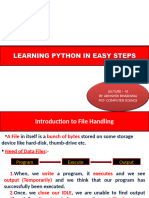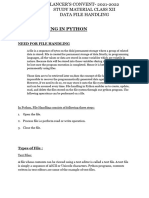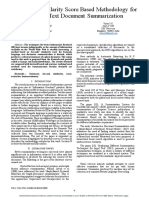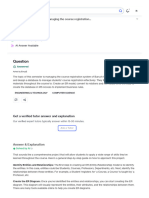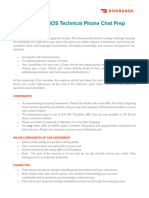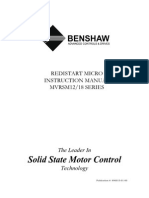0% found this document useful (0 votes)
26 views63 pages(File Handling)
The document discusses file handling in computer science, explaining the need for files to store data permanently and the different types of files such as text, binary, and CSV. It outlines methods for opening files, reading and writing data, and the differences between various file modes like 'r+', 'w+', and 'a'. Additionally, it provides examples of using Python functions to manipulate files, including reading, writing, and appending data.
Uploaded by
rasmiranjitasahoo2822Copyright
© © All Rights Reserved
We take content rights seriously. If you suspect this is your content, claim it here.
Available Formats
Download as PPTX, PDF, TXT or read online on Scribd
0% found this document useful (0 votes)
26 views63 pages(File Handling)
The document discusses file handling in computer science, explaining the need for files to store data permanently and the different types of files such as text, binary, and CSV. It outlines methods for opening files, reading and writing data, and the differences between various file modes like 'r+', 'w+', and 'a'. Additionally, it provides examples of using Python functions to manipulate files, including reading, writing, and appending data.
Uploaded by
rasmiranjitasahoo2822Copyright
© © All Rights Reserved
We take content rights seriously. If you suspect this is your content, claim it here.
Available Formats
Download as PPTX, PDF, TXT or read online on Scribd
/ 63
















